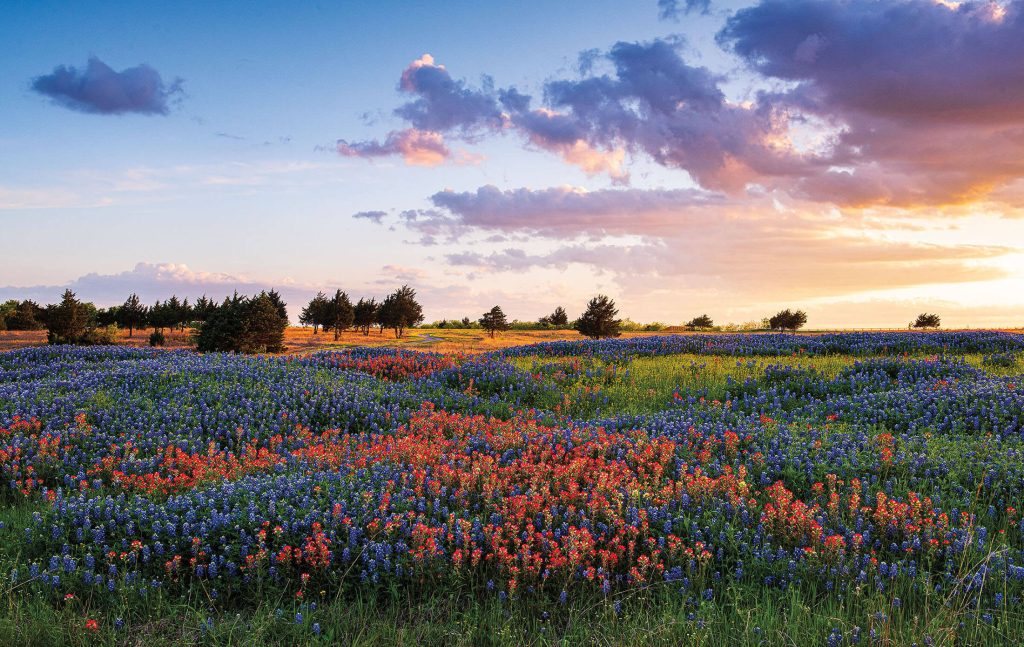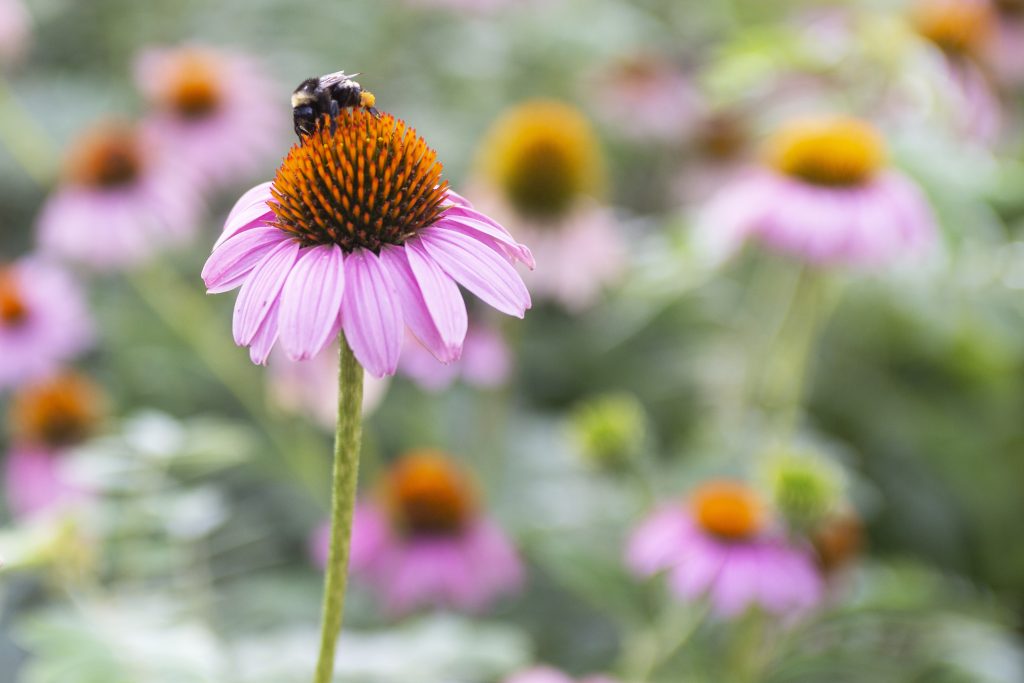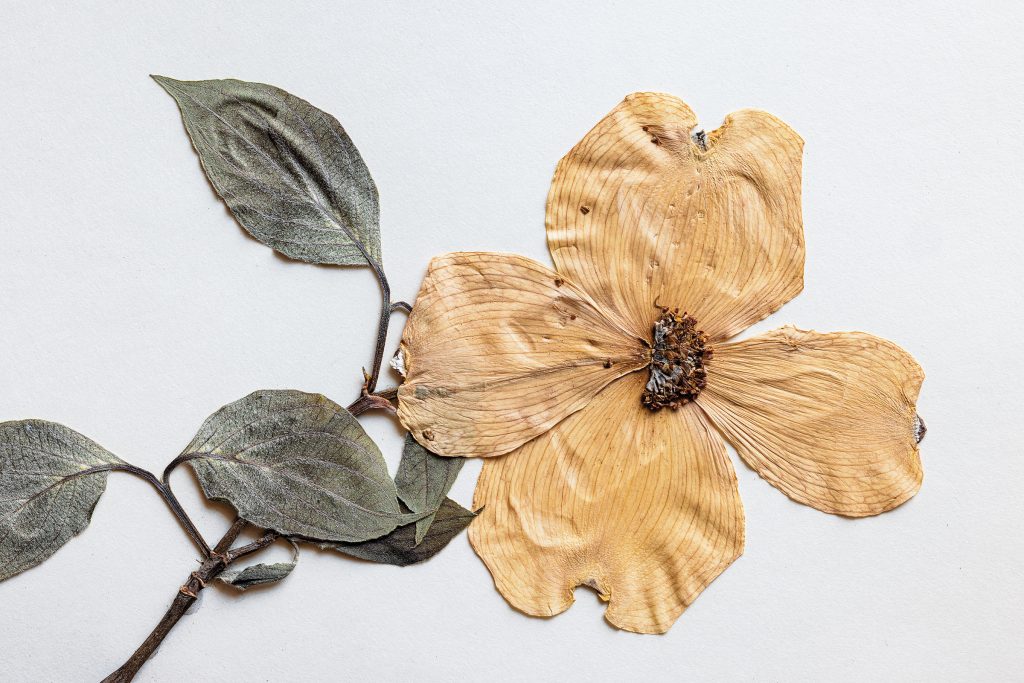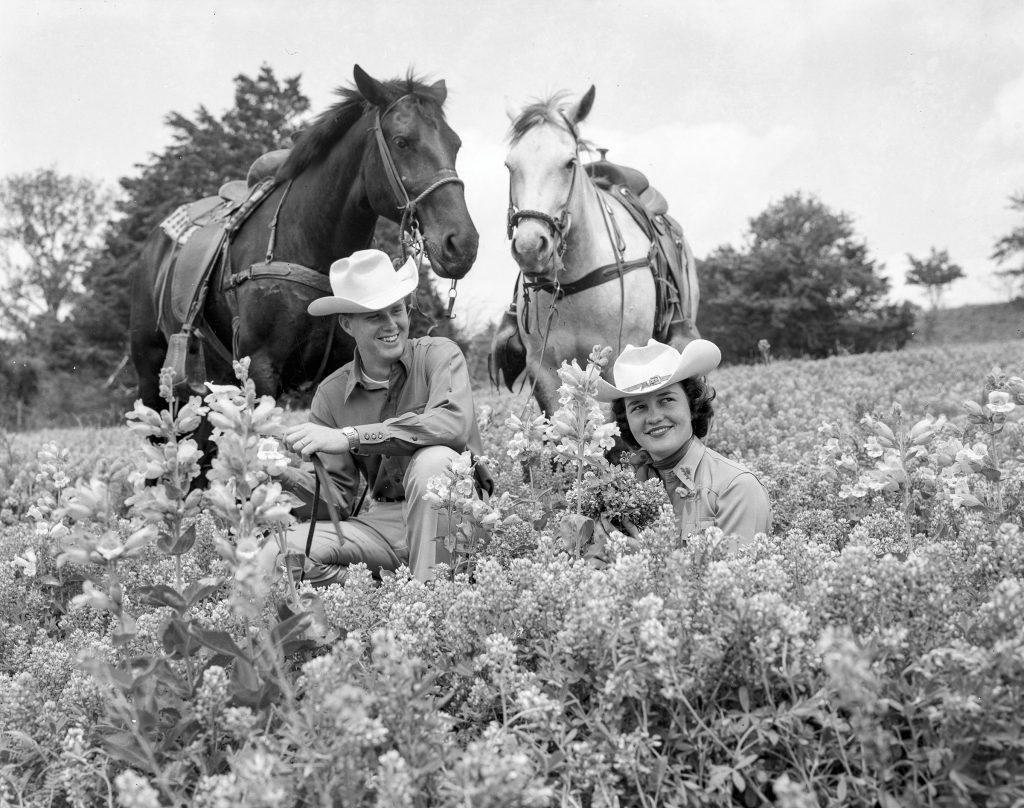
Maggie Rodriguez,
Gardener (former)
Q. When is the best time to mow so that my wildflowers return next year?
A: Once your wildflowers have finished blooming, you can cut them to the ground (or leave them standing if you don’t mind the way they look). Before doing so, make sure they’ve gone to seed. This is especially important for annuals. Inside the old flower (or its seed capsules), you should see small seeds that are hard and dark in color. Once you cut the seed heads off, you can leave them on the ground. Those seed pods will open naturally, letting the seed out. Perennials should return from their original root the following year. Annuals grow from the seed you leave behind or sow. Regarding mowing, I’d say, “Leave your flowers be till the seeds break free.” If you leave spring and summer blooming annuals standing for the summer, that will give them a chance to reseed naturally before mowing in fall.

Karen Beaty,
Horticulturist
Q: What is the right weather for planting?
A: The best time to put out spring blooming native Texas wildflower seed is in the fall. This includes bluebonnets and other Texas favorites like Indian blanket and Mexican hat. Ideally, you sow the seeds before a few days of light rain since germination requires water and it takes a little while for seedlings to establish good roots. Of course, if no rain is in the forecast and you still want to sow seeds, you can help the process along by keeping them lightly watered until they are established. If you’ve missed the fall planting season, there are a few summer and fall blooming wildflowers that can be planted from seed in the spring including partridge pea (Chamaecrista fasciculata) and snow-on-the-mountain (Euphorbia marginata).

Andrea DeLong-Amaya,
Director of Horticulture
Q: When will the bluebonnets appear this year?
A: This is one of the most popular questions we field at the Wildflower Center. Everyone wants to know the exact timing, but it all depends on weather. Bluebonnet seedlings generally sprout in early fall (sometimes late summer if we’ve had some good rains). The plants continue to grow close to the ground as rosettes throughout the winter, gaining size and strength before flowering sometime around late March or early April. Warm sunny days will push earlier flowering, as long as there is ample but not too much moisture. Drought will stunt everything, and soggy soil incites rot and mildew. Cold and cloudy weather from late winter into early spring will slow the show down. The quantity of bluebonnets is also weather directed. Good fall rains and continued rain through winter (as long as it isn’t so much to cause fungal diseases) is the best recipe for a dazzling bluebonnet season.

Samantha Elkinton,
Gardens Manager
Q. Is it illegal to pick bluebonnets?
A: No, this myth comes from a law created in 1933 nicknamed the “Wildflower Protection Act,” which could fine individuals $1 to $10 for picking or pulling any plant (including bluebonnets) on public or private land. The law was erased in 1973, but it is still illegal to damage property on state public lands, which includes picking bluebonnets and damaging all other plants. So, although it is not currently illegal to pick bluebonnets, I encourage everyone to leave bluebonnet flowers attached to their plants so that they can go to seed. Bluebonnets are annuals and need to reseed so their beautiful display can be enjoyed every year.

Melissa Krenek,
Director of Horticulture
Q: What is the right weather for planting?
A: The best time to put out spring blooming native Texas wildflower seed is in the fall. This includes bluebonnets and other Texas favorites like Indian blanket and Mexican hat. Ideally, you sow the seeds before a few days of light rain since germination requires water and it takes a little while for seedlings to establish good roots. Of course, if no rain is in the forecast and you still want to sow seeds, you can help the process along by keeping them lightly watered until they are established. If you’ve missed the fall planting season, there are a few summer and fall blooming wildflowers that can be planted from seed in the spring including partridge pea (Chamaecrista fasciculata) and snow-on-the-mountain (Euphorbia marginata).

Julie Marcus,
Senior Horticulturist
Q: I did everything you recommend! Why are my wildflowers not blooming?
A: Wildflower species are very particular to having the right growing conditions. They must have the correct soil, moisture, and light requirements for their species. Usually, it is one of these criteria not being met that causes lack of bloom, and most of the time it’s not having enough light. Wildflowers that require full sun must have at least six hours or more of direct sun to have adequate bloom. Another thing that can be a factor for lack of blooms is pruning at the wrong time of year. If you have wildflowers that are supposed to bloom in the fall, and you prune in late summer, you will be pruning off the flower buds for that season. A good rule of thumb is always to prune after the bloom period. Sometimes, despite your best efforts, wildflowers will not bloom due to adverse environmental conditions such as weather or insect damage during the bloom period.

Lee Clippard,
Director of Communications
Q. Are bluebonnets safe to eat?
A: Though bluebonnets (Lupinus species) are in the pea family, we would not recommend eating them to be on the safe side. Most species of Lupinus have seeds and other parts that are toxic. In fact, cattle and horses mostly avoid them. Sheep and goats, on the other hand, find them quite tasty. And bluebonnets are eaten by a number of caterpillars, including those of the gray hairstreak, Henry’s elfin, painted lady, American lady, and orange sulphur butterflies. Bluebonnets also feed the soil. Through a special symbiosis in their roots, these legumes take nitrogen from the air and turn it into plant food, thus enriching the soil around them.

Leslie Uppinghouse,
Horticulturist
Q: Can I grow wildflowers in a container garden?
A: If you are short on space, planting wildflowers in a container is a fun and easy way to add color and interest to any deck, patio, or window box. Any container will do, although you’ll want to stay away from plastic if planting in full sun. The container doesn’t need to be deep, as most wildflowers have a shallow root system.
Here’s a classic, sun-loving Texas highway combination to try in containers:
• Texas bluebonnet (Lupinus texensis)
• Indian blanket (Gaillardia pulchella)
• Winecup (Callirhoe involucrata)
• Pink evening primrose (Oenothera speciosa)
Single species that are fun to have alone in individual pots:
• Scrambled eggs (Corydalis curvisiliqua)
• Standing cypress (Ipomopsis rubra)
• Blue flax (Linum lewisii)
• American basket flower
(Centaurea americana)
If you want to continue this year after year, collect the seeds your flowers produce and sprinkle them back into the dirt.

Joe Marcus,
Native Plants of North America Program Coordinator
Q: What is the difference between a wildflower and a weed?
A: The basic definition of a wildflower is “a flowering plant growing in the wild.” Seems obvious, right? Though the concept is simple enough, there are complications. Nativity is an important factor in defining a wildflower. While a showy European native annual naturally would be defined as a wildflower there, it should not be considered one when growing elsewhere. A better definition might be, “a flowering plant growing in the wild in its region of origin.”
A common definition of a weed is “a plant out of place.” Often, though not always, the concept of economic harm is included in the definition. The ability of some plant species to adapt to and even thrive in areas outside their native range often results in them becoming weeds in their adopted lands. Thus, if our beloved Texas bluebonnet (Lupinus texensis) found some part of Asia to its liking, for example, it might well become a rightfully despised weed there.
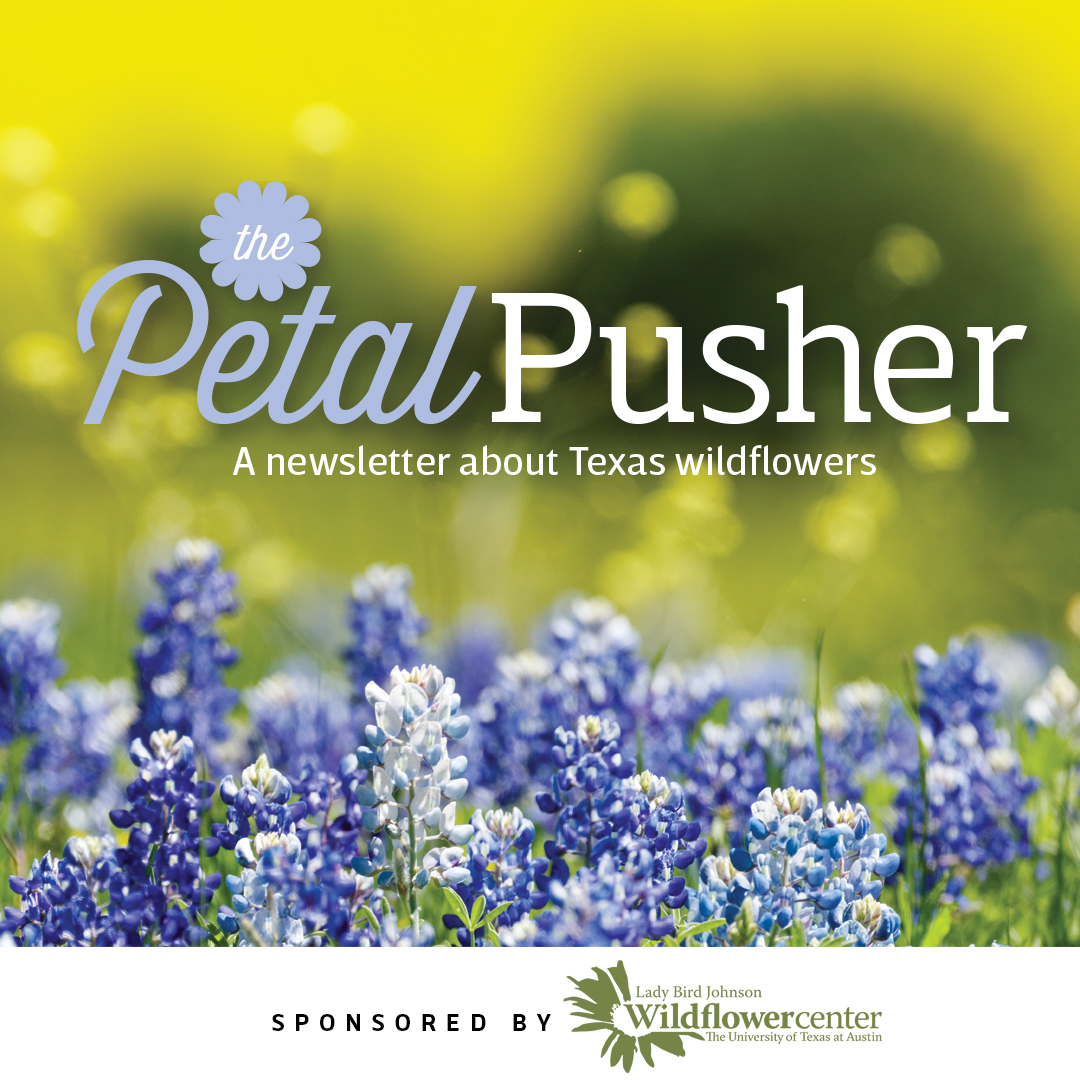
Sign up for our new wildflower newsletter
Sign up for our new email series all about the wildflowers of Texas! You will receive 8 emails (about one per week) about Texas' most abundant blooms, where to find them, and how they became so famous.
